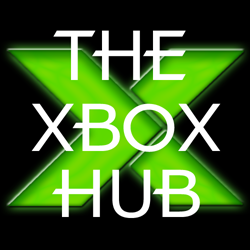Puzzlers. I don’t think there’s another genre that splits a gaming community like them. You are either happy to sit around for hours trying to work out your next move, or give up after 2 minutes and go back to shooting people in the face. Many will be straight on board with the latest one to hit the market, in about the same amount of time as it will take others to completely dismiss it. Quite simply, you either love them, or you hate them.
But every now and then, one drops that threatens to change all those preconceptions.
The Bridge is one such title.
From the moment you load up The Bridge, you can tell there’s something special going on. You begin with an old man sleeping under a tree. You sit there for a while before realising it isn’t you waiting for the game, but instead it is the game waiting for you. From that moment on, you become strangely captivated by the whole damn thing. A few twists of the screen and an apple drops on the mans head, he awakes and off you go on your journey to the bridge.
The controls are simple enough. RT and LT rotate the world, whilst the left stick allows you to move the old man around. There is nothing to tell you this, it’s just something that comes naturally and you’ll notice that same theme throughout. In the same way, it doesn’t take you long to understand that gravity plays a big big part in proceedings. And whilst that starts off nice and simple, it soon ramps up with differing gravitational forces coming into play.
Set over 48 levels, the aim of which is to reach the ‘door’ safely, The Bridge will need you to be on the ball the whole way through. Thankfully due to a Braid style rewind function, there is no permanent death sequence and instead you can happily sit there rewinding back to a point in which you can try a certain section again, right back to the very beginning if you so wish.
And rewinding is something you’ll find yourself doing an awful lot in your quest to reach the end of each level. As previously mentioned, there is no tutorial and there is nothing to tell you what to do. It’s trial and error that is, on the most part, straight forward enough to understand. Every six levels or so there are new elements thrown in to confuse, but each time something new is thrown into the gravitational equation, the first couple of levels using it are usually painless affairs. After that you’ll really need to understand the whole working mechanic to get yourself through. I have to admit to resorting to a YouTube walkthrough for 2 of the first 25 or so levels and reckon without it, I’d still be sat there now. I remember the developer Ty Taylor telling me in our exclusive Q&A that he hopes people would not throw themselves into a walkthrough at the first opportunity and I’m glad to say for the most part, I didn’t! But sorry Ty, there were just one or two that were too much for my little mind!
He also mentioned the need for the gamer to see the ‘a-ha’ moment and I have to admit that The Bridge has these in plentiful supply. It’s a real joy once you’ve got your head round a puzzle that has seemingly taken ages to unravel, even if you can sometimes feel that it eventually gets solved more by luck than judgement. On numerous occasions some levels, which from the outset look pretty simple to complete, can see you still sat there half an hour later still struggling to get to grips with what is going on. There are times when you really do need to just leave it alone for a while, before going back later to solve.
It also has beauty in bucketloads. Thanks to the rather unique M.C. Escher design style, it very easily stands out from the crowd. The handdrawn sketching is absolutely captivating and it’s a joy to see such complex puzzles drawn with such lovingness. The game has won many awards for it’s design and artwork and with every single twist of the world, you can see why.
The Bridge can quite easily be thrown into that bracket of simple but very effective top XBLA puzzlers. Limbo and Braid are amongst the frontrunners and you can easily see the influences of those two games scattered around in this. Whilst I would personally have preferred a few more levels before the difficulty ramped up to a level way past anything I can cope with, (you’ll possibly be tearing your hair out at some of the more advanced ‘mirrored’ levels), it is most definitely a game that will keep those hardened puzzle fanatics busy for some time, whilst still being one that even the most casual of gamer should keep an eye on.
So what do you get if you take a simple enough puzzler, throw in a little bit of Newton and a whole load of Escher?
You get a superb game that can quite easily appeal to all and should be right near the top of everyone’s XBLA shopping lists.






[…] can view our original Xbox 360 review right here, whilst a pretty comprehensive exclusive Q&A that we conducted with the games maker, […]
[…] then we have our review of the XBLA arcade puzzler The Bridge. A cross between Isaac Newton and M.C. Escher, The Bridge was hotly anticipated in many ways. Not […]
Testing